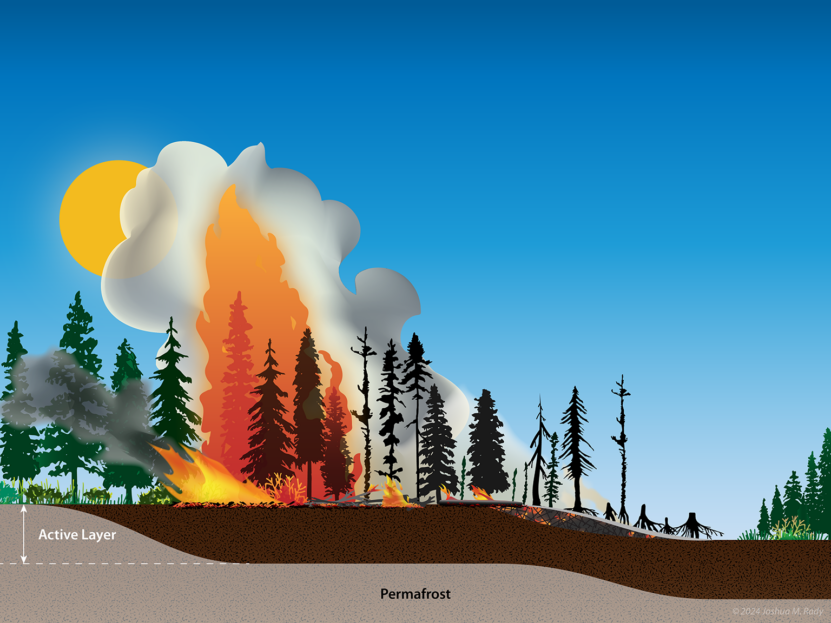
Arctic Communications Strategist, Woodwell Climate Research Center
How climate models help us see into the Arctic’s future
Asked to picture an Arctic scientist, you might first think of someone in a red field parka navigating sea ice in an inflatable dinghy or measuring snow depth on an expanse of treeless tundra. But much of what we’re learning about Northern ecosystems and what the region’s future could look like comes from scientists sitting before screens, working with code and supercomputers. These researchers train sets of complex equations called models that make valuable predictions about the future climate and its impacts based on what we know about how ecosystems work and what we’ve observed in the past.
Those field scientists in parkas are out there, too, gathering important data through experiments and observation. But for a region as vast and hard to traverse as the Arctic—one experiencing the fastest rate of climate warming on the planet, whose frozen ground contains three times as much carbon as is in all the forests on Earth—we need ways to synthesize our observations and use them to power predictions about our climate future. Enter: ecosystem modelers and the programs they build.
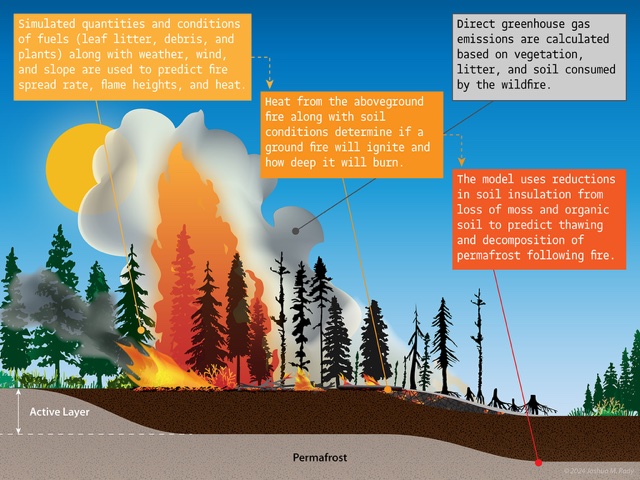
Illustration by Joshua Rady / Woodwell Climate Research Center
While models come in all scales—as small as a single study site to as large as the entire planet—three main types of models are helping us to make sense of Arctic ecosystems and their futures: ecosystem models, Earth system models, and emulator models.
Because our future depends on decisions we make today, modelers at Permafrost Pathways and collaborators from around the world are working with these three kinds of models to help develop a more accurate picture of the present and future Arctic.
Members of the Permafrost Pathways modeling team hosted a workshop at Woodwell Climate Research Center in February 2024.
Different kinds of models help us answer different questions
Ecosystem models
An ecosystem model is designed to represent a natural system and how biological, hydrological, and physical processes interact in that system. The strengths of an ecosystem model lie in its capacity to depict specific elements of a system in great detail and its ability to represent a limited domain, which means this kind of model is useful for answering specific questions quicker and with lower computational costs than other kinds of models.
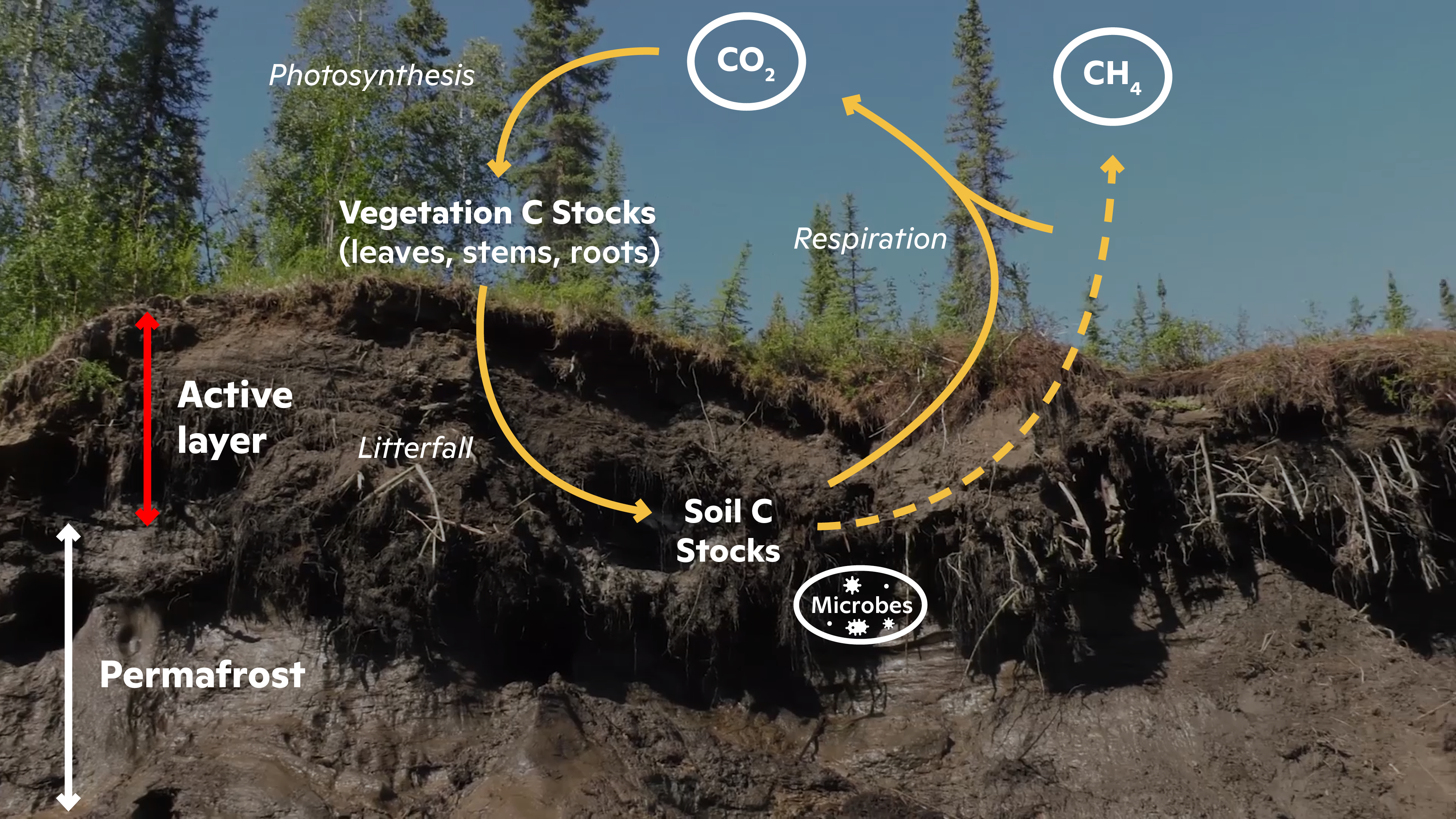
Diagram of biogeochemical processes involved in permafrost thaw. Image courtesy of Sue Natali / Woodwell Climate Research Center
Permafrost Pathways is currently developing a model in collaboration with the University of Alaska-Fairbanks (UAF) that predicts changes in vegetation, hydrology, and permafrost carbon fluxes over large regions.
Map of sentinel sites and land cover. Map by Valeria Briones / Woodwell Climate Research Center
Dubbed DVM-DOS-TEM—short for a “Terrestrial Ecosystem Model” with a “Dynamic Organic Soil” and “Dynamic Vegetation Model” added—this model includes multiple plant community types that represent dominant vegetation types throughout the Arctic. The team developed a composite land cover map that distinguishes between different plant communities that grow together in the North. Relying on this map, the model runs equations about how those communities cycle carbon and nitrogen differently, rather than using a blanket equation to stand in for all plants.
Even though the model isn’t coupled to atmospheric data, predicting changes in vegetation, hydrology, and permafrost carbon fluxes over large regions still requires significant compute time. Running the model for each grid cell takes about five minutes, so processing the millions of points across the circumpolar region would take 5 million minutes of compute time—which equates to 3,472 days or nearly 500 weeks!
To manage this work, the modeling team, led by Woodwell Climate’s Dr. Elchin Jafarov and Dr. Hélène Genet at UAF, is refining a high-performance supercomputer in the cloud, where these tasks can be performed in parallel, reducing the compute time to a few weeks.
The next step in development is working out how best to represent the complex ways both fire and permafrost thaw affect carbon cycling. After testing the model’s accuracy on smaller regions first, the Permafrost Pathways team plans to run simulations of the entire circumpolar Arctic region, with plant life and soil and fire and ice all influencing the carbon cycle in ways that mimic ground conditions.
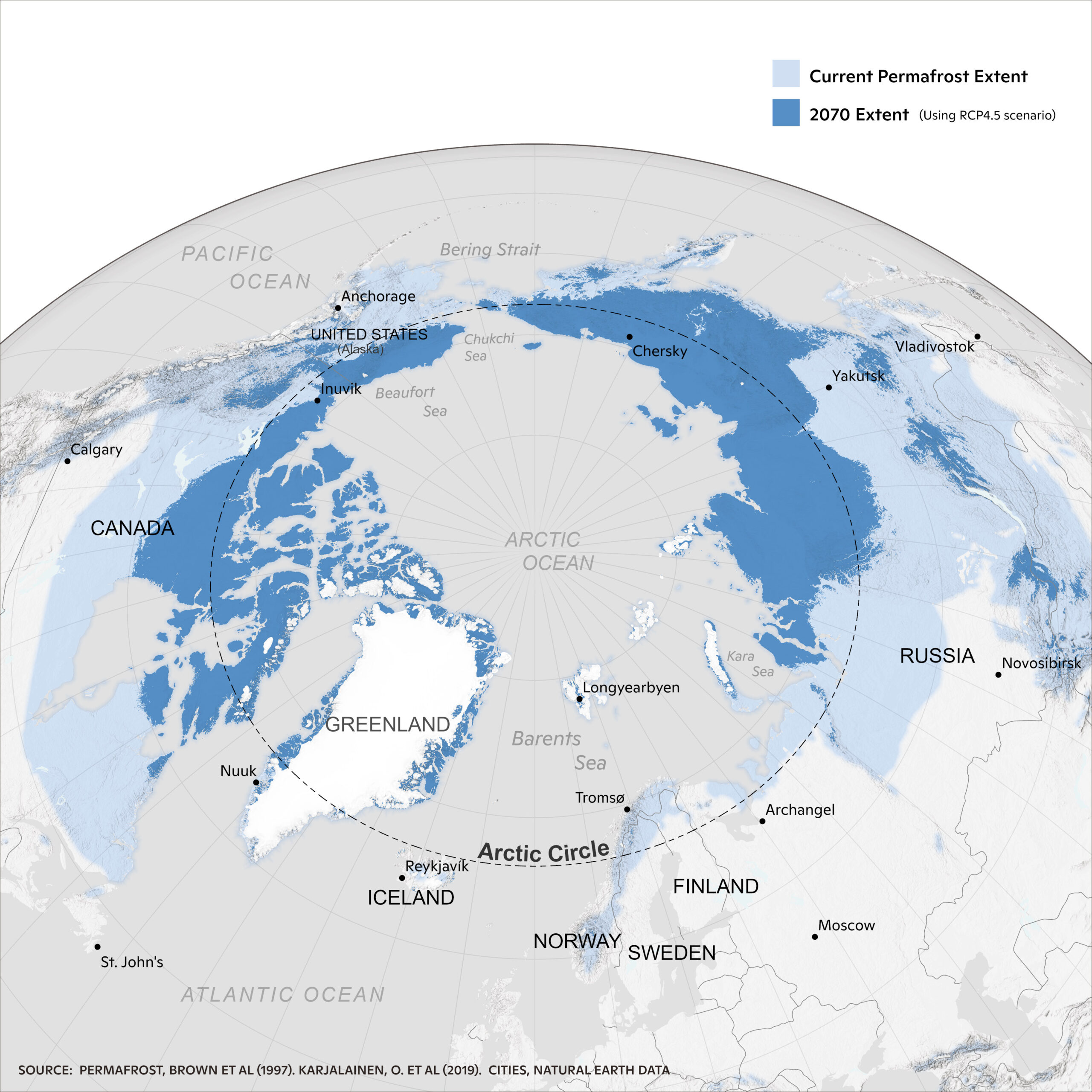
Map depicting current extent of permafrost in Northern Hemisphere (light blue) and projected extent of permafrost in 2070 (dark blue) under RCP 4.5 scenario. Greg Fiske / Woodwell Climate Research Center
Earth System Models
An Earth system model (ESM) is built to illustrate the interconnected effects of climate warming and feedbacks at a global scale. Like other kinds of process models, it segments the Earth into a grid of cells and estimates the conditions in each. ESM models tend to have a coarser resolution than regional models, meaning each cell represents a bigger area (approximately 100km by 100 km), but they are “coupled,” meaning the ocean and terrestrial predictions inform the atmosphere and vice versa, unlike an offline ecosystem model like the DVM-DOS-TEM.
ESMs excel at describing the complexity and motion of the whole planet at a panoramic level. They are resource-intensive and grand in scale, attempting to capture all major physical and biogeochemical processes that make up the planet. This kind of model requires giant room-sized supercomputers and millions of dollars per year in resources to run. Housed at universities and national research centers, each ESM serves a broad community of different research teams.
As comprehensive as they are, ESMs are missing some processes that could be wildcards for the climate, including permafrost thaw and the carbon it releases. Several factors, both structural and scientific, are responsible for these omissions: lack of dedicated funding to represent permafrost, historical gaps in permafrost field data, and a mismatch of scale. The size of a grid cell in an ESM is relatively large compared to the finer scales at which permafrost processes unfold on the landscape.
Given these challenges, the dynamic nature of permafrost and its potential emissions have not been well-represented in most of these models or their climate estimates.
And that’s a problem, because ESMs have also become essential to national and global decision-making about our collective climate future. As Woodwell Climate’s Dr. Christina Schädel and other Permafrost Pathways collaborators point out in a 2024 commentary in Nature Climate Change, only two of the 11 ESMs used in the last IPCC report include permafrost carbon at all, and those that do contain a simplistic equation of gradual permafrost thaw that misses the dynamic and non-linear ways permafrost thaw is affecting carbon emissions and other processes in the North. By not counting permafrost, the model predictions we are working with offer a partial and likely inaccurate picture.
Modelers are working to better integrate this missing piece of the climate puzzle. But because model runs are so resource-intensive, and modeling projects are built around short three-year funding cycles, these changes have been slow to implement, and new observational data accrues faster than it can be ingested to inform ESM outputs.
Emulator Models
Also dubbed “models of reduced complexity,” emulators are a category of model that makes simpler assumptions than an ESM but provides global-scale predictions.
Their strength lies in their nimbleness and policy relevance. These models use a limited number of equations to replicate major Earth system processes and deliver targeted outputs such as carbon dioxide emissions and air temperature.
As their name suggests, these models emulate more complex ecosystem models and ESMs, adopting their structure and assumptions while taking some shortcuts to save computational resources. These shortcuts tend to save on time and space: spitting out annual rather than hourly predictions, for example, and delivering results that are not spatially specific (think: what will happen generally on Earth v. what will happen on 16 square kilometers in Southwest Alaska).
This means emulators and their predictions are only as good as the ESMs and ecosystem models they rely on. As other models improve, so will the emulators.
Two emulator models, OSCAR and MAGICC, help researchers assess how policy choices and land use change can influence natural systems and carbon emissions, and have informed the Global Carbon Budget project and IPCC reports. Permafrost Pathways is using OSCAR to learn about how thawing permafrost and longer, more severe fire seasons affect the carbon budgets required to stay under globally agreed on average temperature targets.
Accurate models require real-world data
While models allow us to see into the future, they are only as good as the accuracy of their predictions. Modelers test this accuracy by comparing model results to real-world data to verify where the model is correctly predicting results and where it isn’t. This process, called validation, involves an iterative effort of comparing the programs’ results against field observations and adjusting model assumptions to better replicate what they see in nature.
In a recent study in Environmental Research Letters led by Woodwell Climate’s Valeria Briones, the Permafrost Pathways team validated the DVM-DOS-TEM model against two tundra sites in Alaska.
The Permafrost Pathways modeling team at Eight Mile Lake in Alaska. Photo by Valeria Briones / Woodwell Climate Research Center
The model closely matched field observations, and its results showed how important soil drainage is to carbon release, but the model also consistently underestimated soil temperature near the surface during the summer months—information the team can use to go back and adjust the model’s built-in assumptions.
However, validation is a simpler task when the scale is a region of Alaska and not the entire planet, making ESMs a more complicated model type to test. The more dynamics, variables, and systems involved, and the higher resolution of the model, the more computing resources are required. The interconnection of a planet’s-worth of systems also makes tracking down the source of an unexpected feedback or wild bit of code a challenge.
One answer to this is data assimilation, a method of automatically integrating observational data into models to constrain and improve them. By regularly ingesting real-world data—such as satellite imagery, carbon flux measurements, and weather station readings—a model can learn what values are in and out of bounds and improve its predictions with less need for time-consuming manual validation.
Another way to accelerate the improvement of coupled models like ESMs is model intercomparison. With energy somewhere between a hackathon and a track and field meet, model intercomparison can accelerate improvement by catalyzing both crowdsourced troubleshooting and friendly competition. To learn more about model intercomparison, check out this comprehensive explainer about the coupled model intercomparison project, CMIP6, which informs the UN’s IPCC reports.
The Permafrost Pathways modeling team had five days of lectures and labs on modeling the Northern permafrost zone at the University of Alaska Fairbanks in early 2023. Photo by Christina Schädel / Woodwell Climate Research Center
A third way to improve model predictions is to foster stronger collaboration and coordination between field and model scientists. There are a growing number of international efforts to do this, including the Permafrost Carbon Network, the Dept. of Energy-backed Next Generation Ecosystem Experiments, and the DOE Warming Permafrost Model Intercomparison Project led by Woodwell’s Schädel.
But as the last few years have demonstrated, the climate system and the policy landscape are both changing quickly, challenging long-held assumptions and historical norms. When a model run can take months and costs hundreds of thousands of dollars, researchers need a more nimble and efficient way to test hypotheses or assess different policy choices. For these, they rely on emulator models.
Grand challenges and what’s ahead for permafrost modeling
While emulators, ESMs, and other climate models are providing us valuable insights into Earth’s hotter future, they still have a ways to go towards accurately describing and predicting the complex conditions and interactions that form Earth’s climate system.
One way researchers understand this distance is by looking at a range of output scenarios from different models given similar initial inputs. The greater the variance among scenarios, the more “uncertainty” exists, meaning more refinement is needed in our models.
Certain aspects of the climate system contain more uncertainty than others. Permafrost thaw is one of the largest uncertainties in ESMs, meaning that its accuracy—or its errors—could significantly change predictions about everything else, especially carbon in the atmosphere.
But we know what to do and what resources are needed. As Schädel et al. wrote in Nature Climate Change, “Many of the building blocks needed to improve modeling of permafrost processes are in place (e.g., computational resources, skilled modelers, and scientific expertise), and increased and targeted funding can help solve the longstanding challenges of permafrost modeling.”
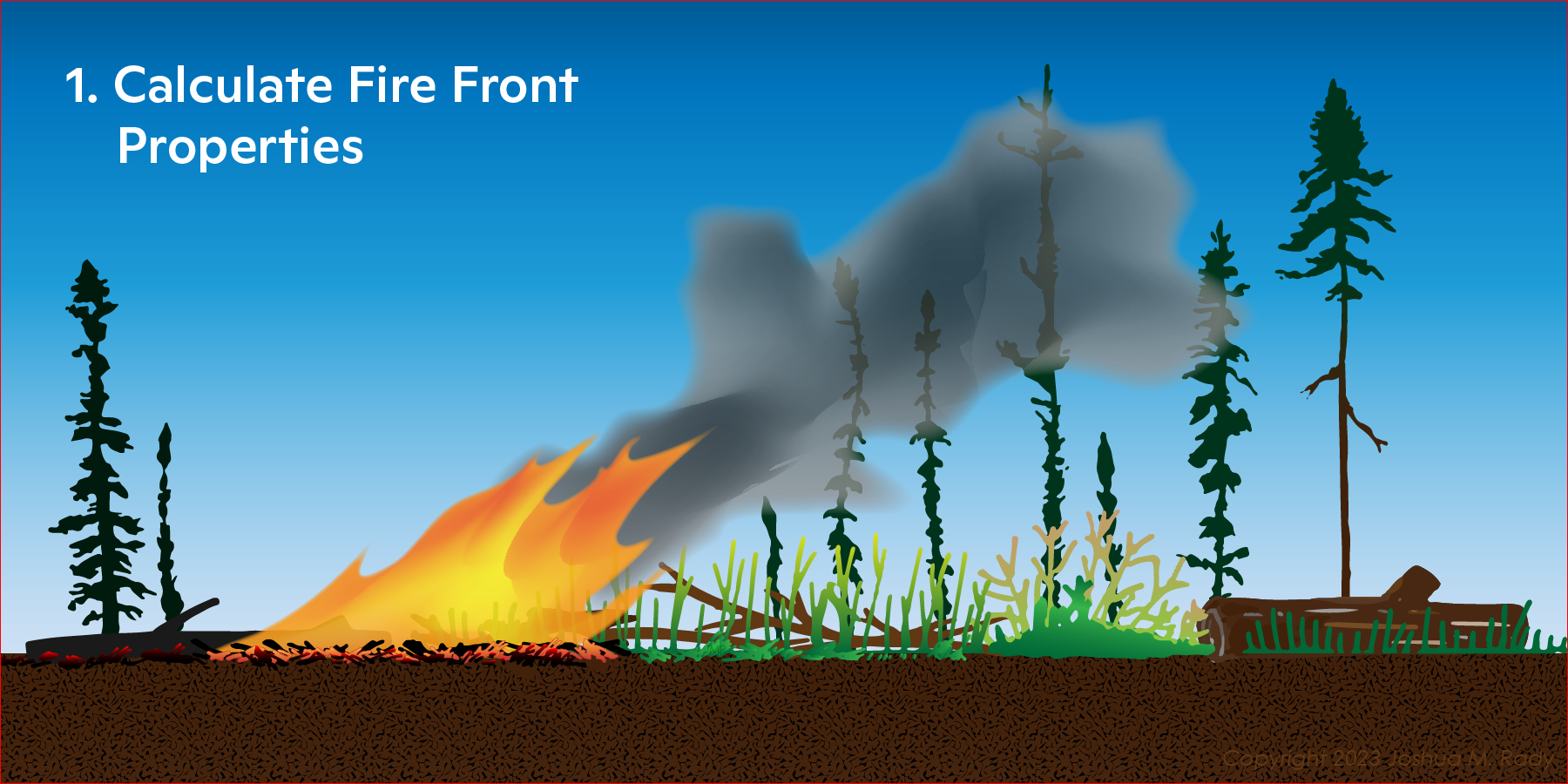
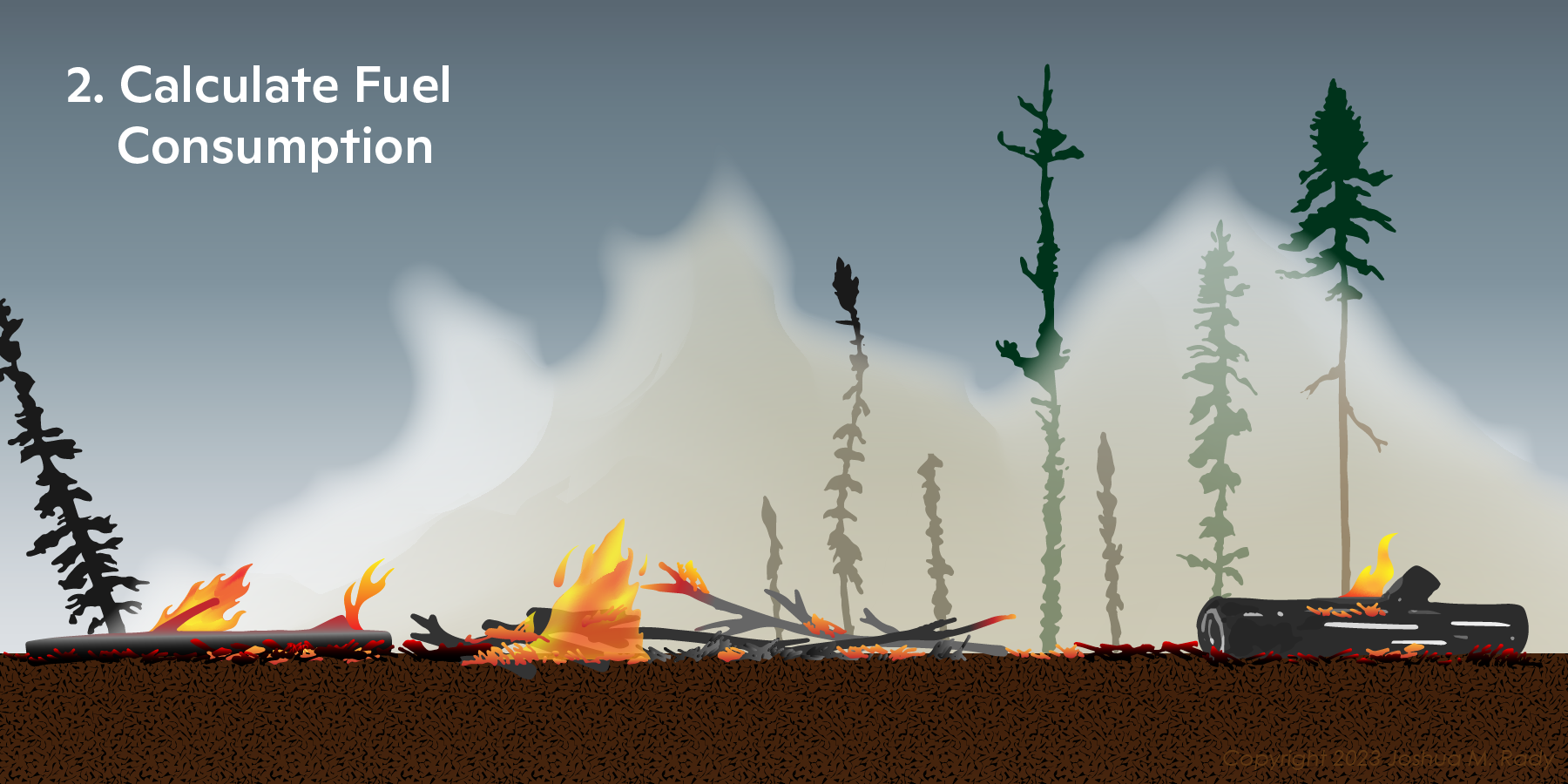
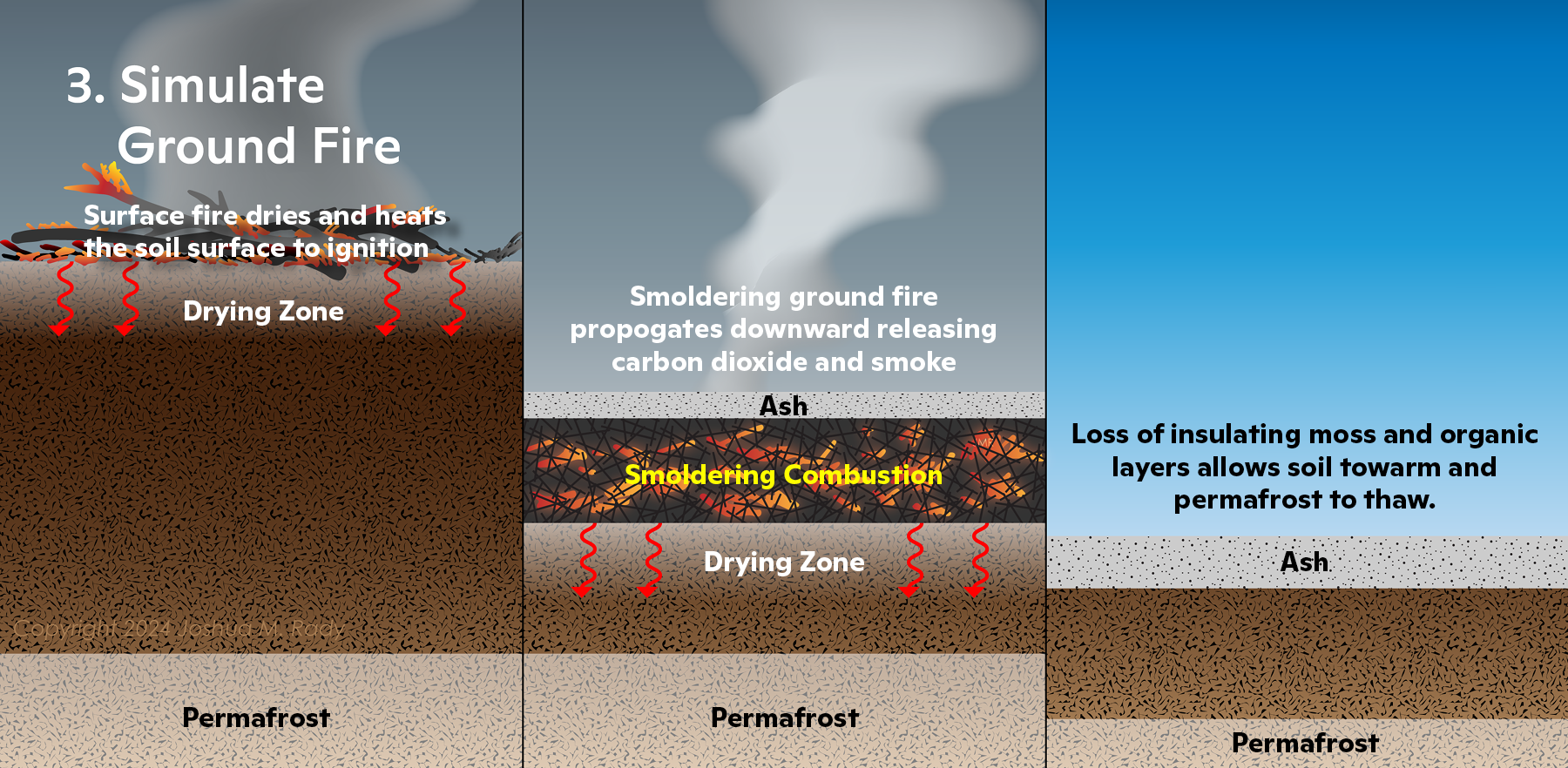
Anatomy of a wildfire. Illustrations by Joshua Rady / Woodwell Climate Research Center
Better incorporating disturbances and how they affect permafrost thaw and carbon emissions is key to such improvement. The DVM-DOS-TEM model’s ability to predict how fire, abrupt thaw, and soil conditions change the permafrost equation will help close this critical gap between the planet we model and the planet we observe.
Why climate models matter to every community
While modeling is a highly technical and sometimes abstract-seeming practice, its influence on our everyday lives is profound.
Knowing what’s likely to happen and understanding what’s at risk helps us better prepare our communities. Just as weather models have improved forecasting dramatically in the last few decades and made way for life-saving early warning systems to come online, more accurate climate models can guide more targeted and appropriate policy and management responses. They can also potentially inform early warning systems for climate emergencies, infrastructure that the UN has called for to be universally available by 2027.
But we can’t plan for what we don’t count, so it’s critical that more ESMs include permafrost processes and incorporate the latest science on how those processes affect carbon emissions and warming. To do that, having an ecosystem model that accurately depicts how permafrost thaw affects carbon cycling, vegetation, and hydrology across the Arctic will be crucial.
Learn more
- Proceedings of the International Conference on Permafrost, June 2024 (pdf)
- How Do Climate Models Work?, Carbon Brief, January 2018
- CMIP6: The Next Generation of Climate Models Explained, Carbon Brief, December 2019
Go to top

